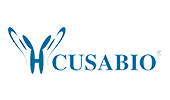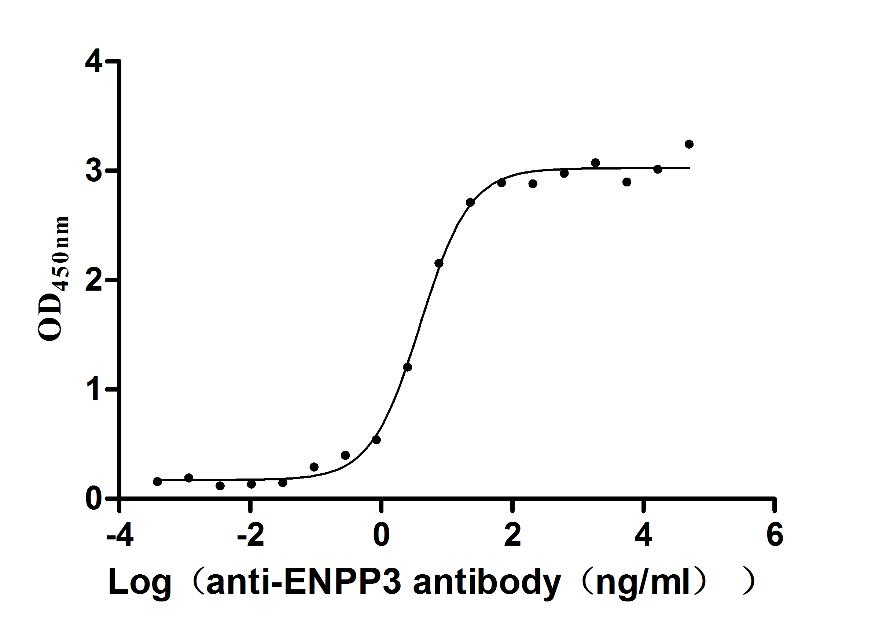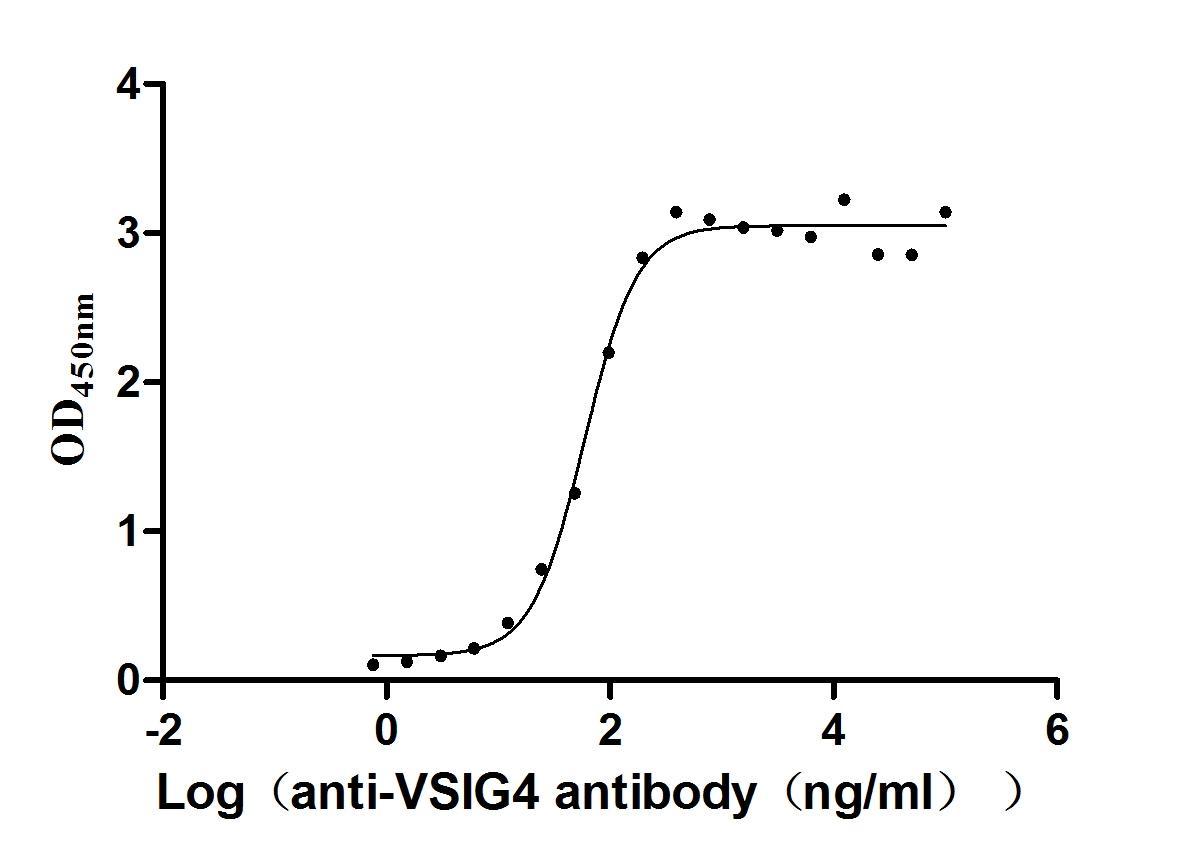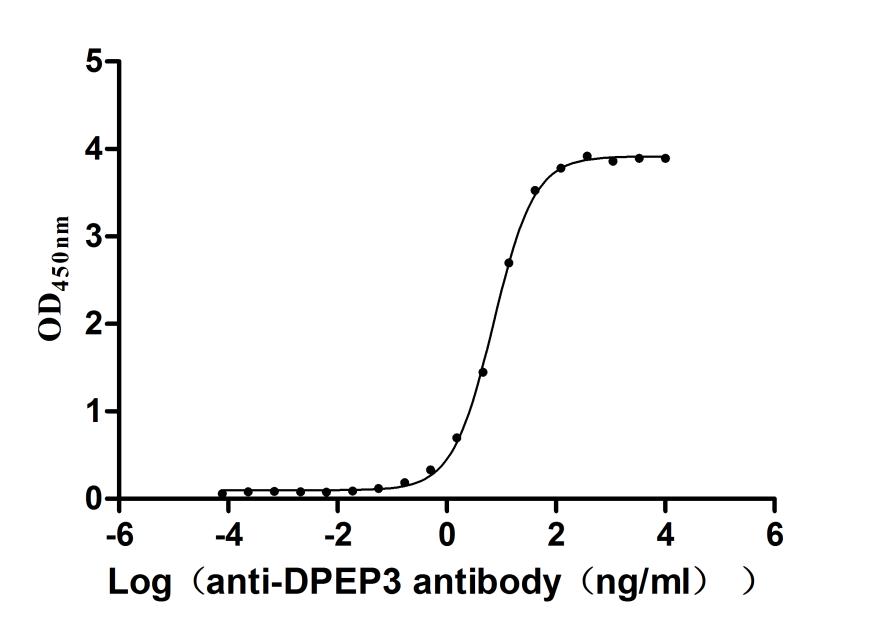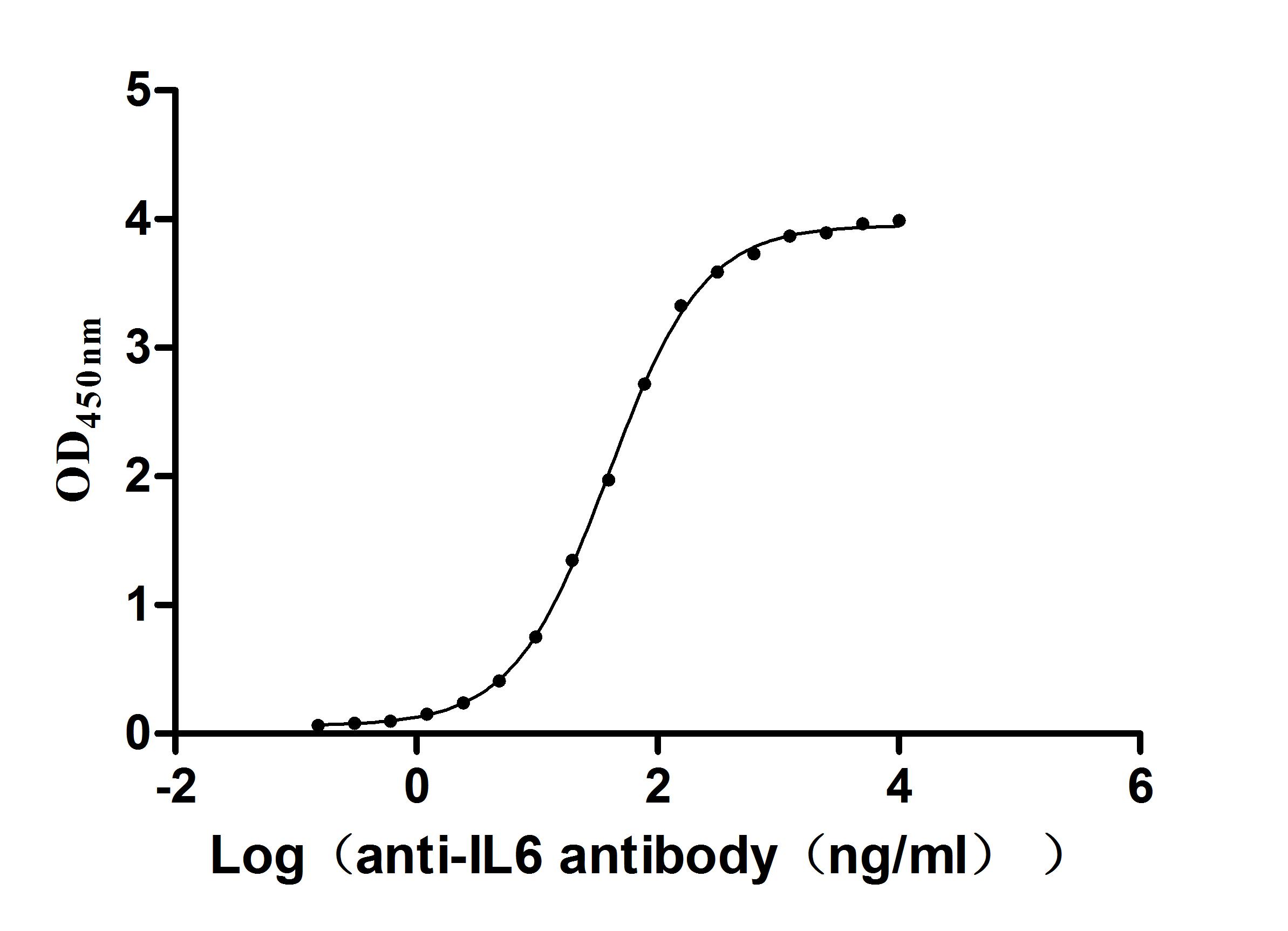Recombinant Rat Plasminogen activator inhibitor 1 (Serpine1)
In Stock Promotion-
中文名稱:大鼠Serpine1重組蛋白
-
貨號:CSB-EP021081RA
-
規(guī)格:¥1836
-
促銷:
-
圖片:
-
其他:
產品詳情
-
純度:Greater than 90% as determined by SDS-PAGE.
-
基因名:Serpine1
-
Uniprot No.:
-
別名:Serpine1; Pai1; Planh1; Plasminogen activator inhibitor 1; PAI; PAI-1; Endothelial plasminogen activator inhibitor; Serpin E1
-
種屬:Rattus norvegicus (Rat)
-
蛋白長度:Full Length of Mature Protein
-
來源:E.coli
-
分子量:58.6kDa
-
表達區(qū)域:24-402aa
-
氨基酸序列SPLPESHTAQQATNFGVKVFQHVVQASKDRNVVFSPYGVSSVLAMLQLTTAGKTRQQIQDAMGFNISERGTAPALRKLSKELMGSWNKNEISTADAIFVQRDLELVQGFMPHFFKLFRTTVKQVDFSEVERARFIINDWVERHTKGMISDLLAKGAVNELTRLVLVNALYFNGQWKTPFLEASTHQRLFHKSDGSTISVPMMAQNNKFNYTEFTTPDGHEYDILELPYHGETLSMFIAAPFEKDVPLSAITNILDAELIRQWKSNMTRLPRLLILPKFSLETEVDLRGPLEKLGMTDIFSSTQADFTSLSDQEQLSVAQALQKVKIEVNESGTVASSSTAILVSARMAPTEMVLDRSFLFVVRHNPTETILFMGQLMEP
Note: The complete sequence including tag sequence, target protein sequence and linker sequence could be provided upon request. -
蛋白標簽:N-terminal 6xHis-SUMO-tagged
-
產品提供形式:Liquid or Lyophilized powder
Note: We will preferentially ship the format that we have in stock, however, if you have any special requirement for the format, please remark your requirement when placing the order, we will prepare according to your demand. -
緩沖液:Tris-based buffer,50% glycerol
-
儲存條件:Store at -20°C/-80°C upon receipt, aliquoting is necessary for mutiple use. Avoid repeated freeze-thaw cycles.
-
保質期:The shelf life is related to many factors, storage state, buffer ingredients, storage temperature and the stability of the protein itself.
Generally, the shelf life of liquid form is 6 months at -20°C/-80°C. The shelf life of lyophilized form is 12 months at -20°C/-80°C. -
貨期:3-7 business days
-
注意事項:Repeated freezing and thawing is not recommended. Store working aliquots at 4°C for up to one week.
-
Datasheet & COA:Please contact us to get it.
相關產品
靶點詳情
-
功能:Serine protease inhibitor. Inhibits TMPRSS7. Is a primary inhibitor of tissue-type plasminogen activator (PLAT) and urokinase-type plasminogen activator (PLAU). As PLAT inhibitor, it is required for fibrinolysis down-regulation and is responsible for the controlled degradation of blood clots. As PLAU inhibitor, it is involved in the regulation of cell adhesion and spreading. Acts as a regulator of cell migration, independently of its role as protease inhibitor. It is required for stimulation of keratinocyte migration during cutaneous injury repair. It is involved in cellular and replicative senescence. Plays a role in alveolar type 2 cells senescence in the lung. Is involved in the regulation of cementogenic differentiation of periodontal ligament stem cells, and regulates odontoblast differentiation and dentin formation during odontogenesis.
-
基因功能參考文獻:
- PAI-1 induces alveolar type II cell senescence through activating p53-p21-Rb pathway in fibrotic lung disease. PMID: 28722352
- PAI-1 is implicated in the pathophysiology of depression. PMID: 27456456
- Our results demonstrate the antifibrotic effect of PTX on radiation-induced lung fibrosis and its effect on modulation of PKA and PAI-1 expression as possible antifibrotic mechanisms. PMID: 28337441
- Paclitaxel at low non-cytotoxic doses ameliorates renal fibrosis by inhibiting multiple steps in the TGF-beta1-induced PAI-1 signaling including Smads and mitogen-activated protein kinases. PMID: 26869361
- Aldosterone at different concentrations exerts synergistic effect with TGF-beta1 to increase PAI-1 expression in hepatic stellate cells PMID: 26617694
- inhibition of ERK1/2 activation has no therapeutic effect on kidney fibrosis in SNx possibly due to increased compensatory activation of the p38 and JNK signalling pathways with subsequent upregulation of PAI-1. PMID: 26415098
- These results suggest the critical physiological role of TRL4-Fyn interaction in the modulation of PAI-1-tPA axis in astrocytes during neuroinflammatory responses such as ischemia/reperfusion injuries. PMID: 25106729
- these results suggested that TGF-beta1 and Serpine 1 overexpression might play an important role in DVT formation and have predictive values. PMID: 26535698
- PAI-1 contributes to the regulation of the inflammatory response in alveolar macrophages. PMID: 25342286
- Neurite extension effects of valproic acid are mediated by modulating the tPA/plasminogen activator inhibitor (PAI)-1 system. PMID: 23378038
- Together, because CPAI blocks both proteolytic and nonproteolytic tPA neurotoxicity, it is a promising therapeutics of neonatal HI injury either with or without infection. PMID: 22556277
- PAI-1 promotes the proliferation, transforming into myofibroblasts, collagen synthesis, and inhibits apoptosis of pulmonary fibroblasts by activating Ca(2+), ERK and AKT signaling pathway. PMID: 23021499
- adhesion scores, PAI-1 activity in peritoneal lavage fluid, and PAI-1 mRNA levels in peritoneal mesothelium were significantly greater in the open surgery group than the control and laparoscopic surgery groups PMID: 23218127
- This study supports that a preceding progesterone-enriched milieu prevented the enhanced prothrombotic risk induced by a fructose-rich diet-elicited high PAI-1 production. PMID: 23016136
- down-regulation of PAI-1 and MMP-9 might contribute to abnormal programming of renal growth in rats exposed to postnatal early overnutrition PMID: 21752621
- The data demonstrate that PAI-1 siRNA inhibits alveolitis and pulmonary fibrosis in bleomycin-treated rats via inhibiting the proliferation and promoting the apoptosis of fibroblasts. PMID: 22659625
- mRNA, protein and activity of matrix metalloproteinase (MMP)-2 and MMP-9 and mRNA of tissue plasminogen activator (t-PA) and plasminogen activator inhibitor 1 (PAI-1) were quantified in abdominal aorta (AA) and femoral artery (FA). PMID: 22071631
- Hydrocortisone up-regulates PAI-1 expression in a tissue-specific manner along with down-regulation of tPA activity in both normal and inflammatory conditions. PMID: 21412817
- The activity of tissue plasminogen activator peaks transiently and then decreases in cortex and striatum along with delayed induction of PAI-1 in the inflammatory stage after reperfusion injury. PMID: 21193004
- Data suggest PAI1 plays key role in modulating chromaffin cell neurosecretory function. Evidence is presented that in chromaffin cells, PAI1 is targeted to storage vesicles and co-released with catecholamine upon secretagogue stimulation. PMID: 21596853
- PAI-1 derived from the neurovascular unit and peripheral vascular system participates as a positive regulator of the blood-brain barrier in facilitating the barrier function of the endothelial tight junctions. PMID: 21036181
- Erigeron breviscapus injection can inhibit the expression of TNF-alpha and PAI-1, and increase the expression of tPA in rats with acute myocardial infarction. PMID: 21355198
- PAI-1 may play a protective role against cardiovascular disease in diabetes PMID: 20538356
- Expression of u-PA/PAI-1 mRNA and protein increased during the early stage of hyperoxic exposure and decreased during the middle and late stage. PMID: 19099788
- The results suggest that SHP inhibits PAI-1 expression in VSMCs through the suppression of TGF-beta/Smad3 and AP-1 activity. PMID: 19887897
- High glucose decreased the expressions of tPA and uPA, and increased PAI1. Losartan could partly reverse partly this expression. PMID: 17953365
- Dahuang Zhechong Pill can down-regulate the expressions of TIMP-1 and PAI-1 mRNAs in renal tissues of rats with focal segmental glomerulosclerosis. PMID: 18471418
- Inactivation of PAI-1 speeds lysis of a platelet-rich clot in rat mesenteric arterioles. Active PAI-1 participates in arteriolar microcirculation resistance to thrombolysis and its inactivation may shorten ischemic periods after microvascular obstruction. PMID: 11776323
- The hexosamine pathway regulates the plasminogen activator inhibitor-1 gene promoter and Sp1 transcriptional activation through protein kinase C-betaI and -delta. PMID: 12105191
- pathways of regulation of PAI1 induction and secretion by growth factors bFGF and PDGF in smooth muscle cells PMID: 12192306
- Data show that recovery from obstruction-induced renal fibrosis was correlated with diminished expression of TGF-beta, collagen IV, and plasminogen activator inhibitor-1. PMID: 12365557
- HIF1a and hypoxia response elements mediate the induction of PAI-1 gene expression by insulin via the PI3K/PKB pathway in primary rat hepatocytes. PMID: 12393531
- possible role as the neurotrophic factor PMID: 12491782
- Expression of functionally active PN-1 has been examined in vitro in rat aortic smooth muscle cells and in vivo in rat arterial media and its regulation in hypertensive rats. PMID: 12524238
- Northern analysis confirmed upregulation of PAI-1, P2X4, and P15INK4B in cultured alveolar epithelial type I cells (AT1); in whole lung, all three proteins were detected in alveolar epithelium in a location consistent with expression in AT1 cells PMID: 12600825
- hypoxia-dependent plasminogen activator inhibitor 1 expression is regulated by MAP kinases PMID: 12669121
- In cells expressing RacG12V, ROS production was increased and PAI-1 mRNA levels as well as HIF-alpha nuclear presence were reduced under normoxia and hypoxia; whereas expression of RacT17N resulted in decreased ROS production and opposite effects. PMID: 12719791
- Enhanced expression of clock genes may increase PAI-1 expression in concert with activated renin-angiotensin system in SHR heart PMID: 12777947
- after transient focal cerebral ischemia, there are time dependent changes in PAI-1 expression PMID: 14512838
- cellular carbonyl stress may stimulate PAI-1 synthesis in and release from adipose tissues through ROS formation PMID: 14610081
- Pai1 expression is required for epithelial cell migration in in vitro wound healing. PMID: 15174100
- PAI-1 and TGF-beta 1 in carotid glomus and autonomic ganglia were significantly increased (P < 0.01) in hypertensive rats PMID: 15201552
- Altered expression of Pai-1 in diabetic nephropathy was associated with mesangial expansion. PMID: 15322501
- Regression of glomerulosclerosis was linked to decreased tissue inhibitor of metalloproteinase-1 and plasminogen activator inhibitor-1. PMID: 15728787
- Cardiac PAI-1 gene expression regulation is mediated through c-Jun NH2-terminal kinase activation. PMID: 15808835
- the essential requirement of MAPK/AP-1 activation for TGF-beta1-induced PAI-1 expression is unique to rat mesangial cells PMID: 16105028
- A dual role for PAI-1 in epithelial cell wound healing, both as a soluble inhibitor of proteolysis and also as a matrix-bound regulator of cell migration, is proposed. PMID: 17071586
- This study indicate that aldosterone can increase PAI-1 mRNA and protein expression by cultured mesangial cells alone, which is independent of aldosterone-induced increases in TGF-beta(1) expression and cellular reactive oxygen species. PMID: 17394767
- Renin induces ERK1/2 activation. Renin-activated pathway triggers cell proliferation along with TGF-beta1 and plasminogen activator inhibitor-1 gene expression. PMID: 17396111
- PAI-1 plays a role in the occurrence of liver failure after excessive hepatectomy via accelerated maturation of pro-uPA and fibrinolytic factors. PMID: 17655862
顯示更多
收起更多
-
亞細胞定位:Secreted.
-
蛋白家族:Serpin family
-
數(shù)據(jù)庫鏈接:
Most popular with customers
-
Recombinant Human Intestinal-type alkaline phosphatase (ALPI) (Active)
Express system: Mammalian cell
Species: Homo sapiens (Human)
-
Recombinant Human Cannabinoid receptor 1 (CNR1)-VLPs (Active)
Express system: Mammalian cell
Species: Homo sapiens (Human)
-
Express system: Mammalian cell
Species: Macaca fascicularis (Crab-eating macaque) (Cynomolgus monkey)
-
Recombinant Dog B-lymphocyte antigen CD20 (MS4A1)-VLPs (Active)
Express system: Mammalian cell
Species: Canis lupus familiaris (Dog) (Canis familiaris)
-
Recombinant Human V-set and immunoglobulin domain-containing protein 4 (VSIG4), partial (Active)
Express system: Mammalian cell
Species: Homo sapiens (Human)
-
Recombinant Human Dipeptidase 3(DPEP3), partial (Active)
Express system: Mammalian cell
Species: Homo sapiens (Human)
-
-
Recombinant Macaca fascicularis Zinc transporter ZIP6 isoform X1(SLC39A6),partial (Active)
Express system: Baculovirus
Species: Macaca fascicularis (Crab-eating macaque) (Cynomolgus monkey)




